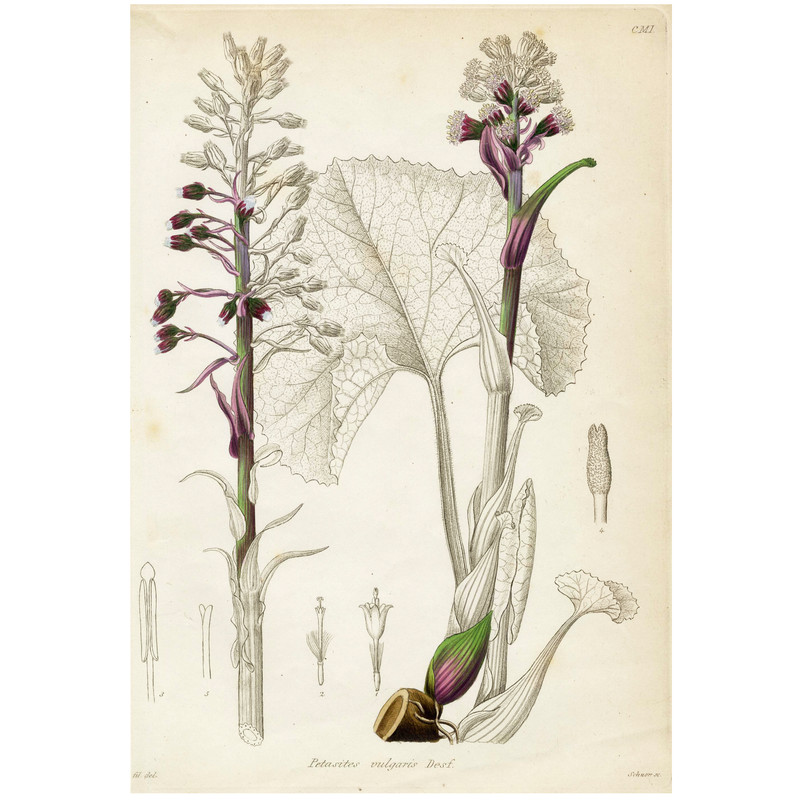1834 REICHENBACH FLORA Hand-Colored Engraving, PETASITES (Coltsfoot, Butterbur)

The Volumes:
This vast botanical work comprising more than 3,000 color plates known as Deutschlands Flora by botanist and illustrator Heinrich Gottlieb Ludwig Reichenbach (1793-1879), published installments in 25 volumes between 1837 and 1867, and then continued in additional volumes through 1912.
I believe this work, the 'Icones' is a related series with spectacular plates. This set are printed on rather thinner paper, which makes their craft yet more impressive.
The Editor:
Heinrich Gottlieb Ludwig Reichenbach (1793 – 1879) was a German botanist, ornithologist and illustrator, pteridologist, bryologist, zoologist, university teacher, entomologist, mycologist.
His published works on natural history are epic & highly important to science & art.
Among his many achievements he had produced a set of glass marine invertebrate models for scientific education and museum showcasing, the successful commission giving rise to the creation of the Blaschkas' Glass sea creatures and, subsequently and indirectly, the more famous Glass Flowers.
The Plates & Technique:
Line-engraving or Copperplate engraving is a highly exacting & labor-intensive process for intaglio printmaking.
The original drawing is cut into the surface of a copper or steel plate with a hand-held sharp steel point or burin, with shading created by many fine cut lines, or hatching. Before printing takes place, the plate is heated, covered with ink. The warm ink seeps into the finest of depressions and fills the lines and textures of the drawing. The rest of the plate is cleaned off. The copper plate is now pressed with a printing press on to moistened paper which soaks up the ink from the depressions in the plate. The copperplate-engraving technique is very exacting, time-consuming and exhausting for the engraver, who needs a lot of strength for it.
Every part of these prints was made by hand: Hand drawn & engraved on Copper or steel which was hand-mined, smelted & rolled, printed onto usually handmade cotton rag paper, inked & colored with hand-ground pigments individually by hand, & they were usually hand sewn into handmade leather-bound books.
Condition:
Appear to be in good condition for centuries-old engravings. The hand-coloring appears sharp & brilliant. These were printed on thinner paper so they're a bit fragile, & typically have some age-toning & antiquarian character, yet the quality of the work is stunning. A clean plate as these go save some faint foxing in some of these. Please peruse the detailed photos.
These prints are very old & may have minor imperfections expected with age, such as some typical age-toning of the paper, oxidation of the old original watercolors, spots, text-offsetting, artifacts from having been bound into a book, etc. Please examine the photos & details carefully.
Size: 9-1/2 x 6-1/2 inches approximately.
Text Page(s):
This one comes without original page(s) of text. Included in the images are scans of a title page & frontispiece from one of the volumes for reference (not part of the listing).








